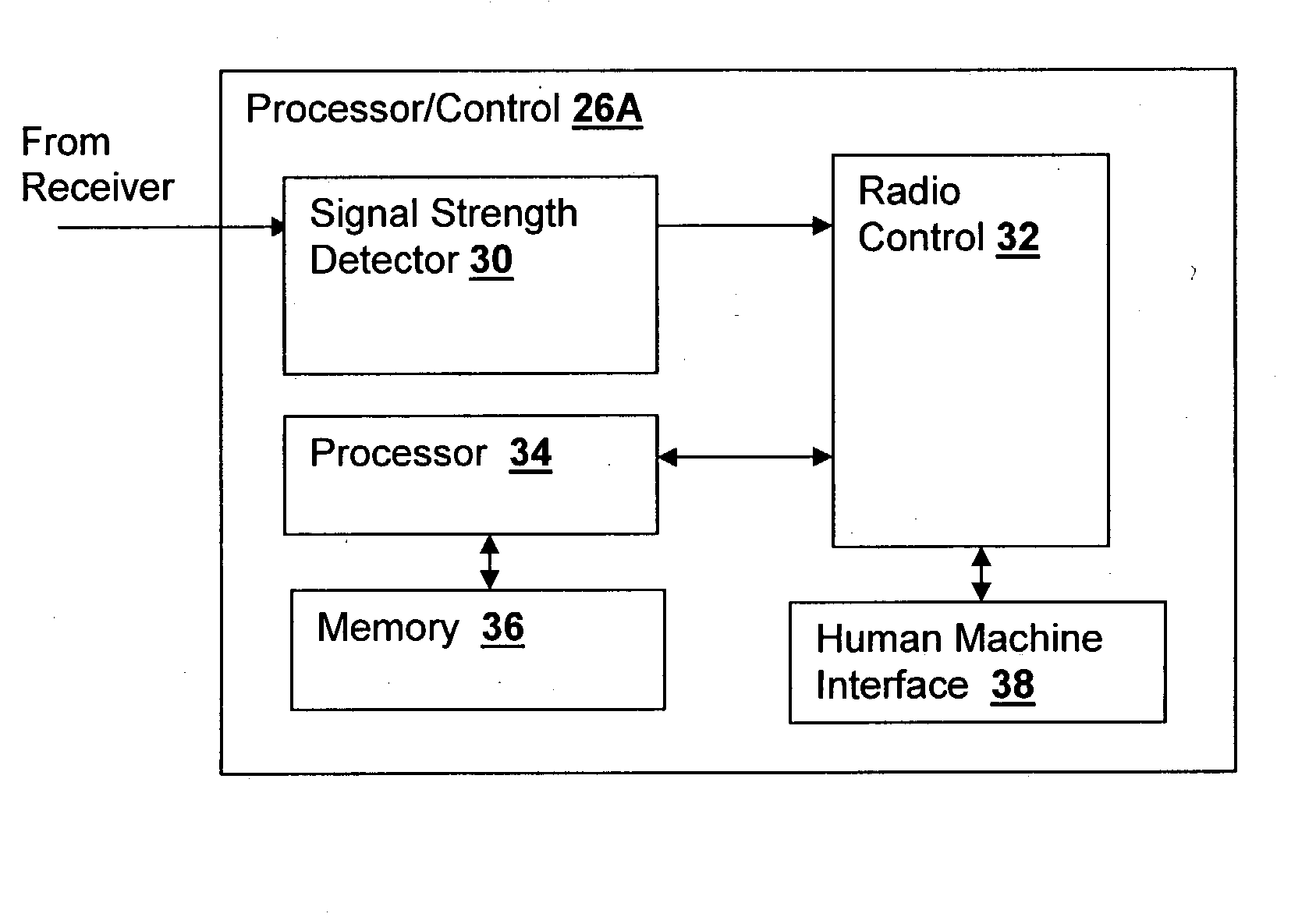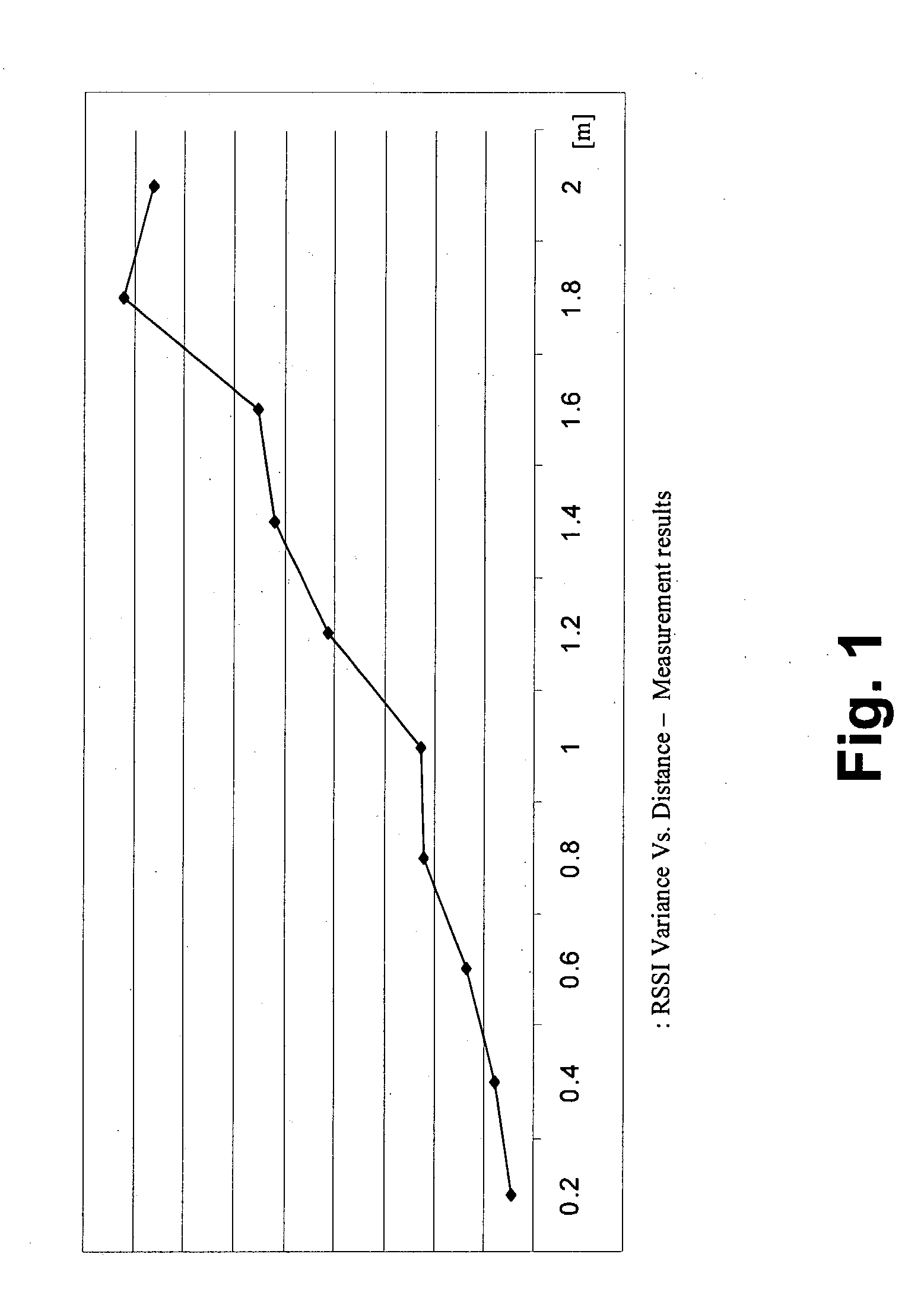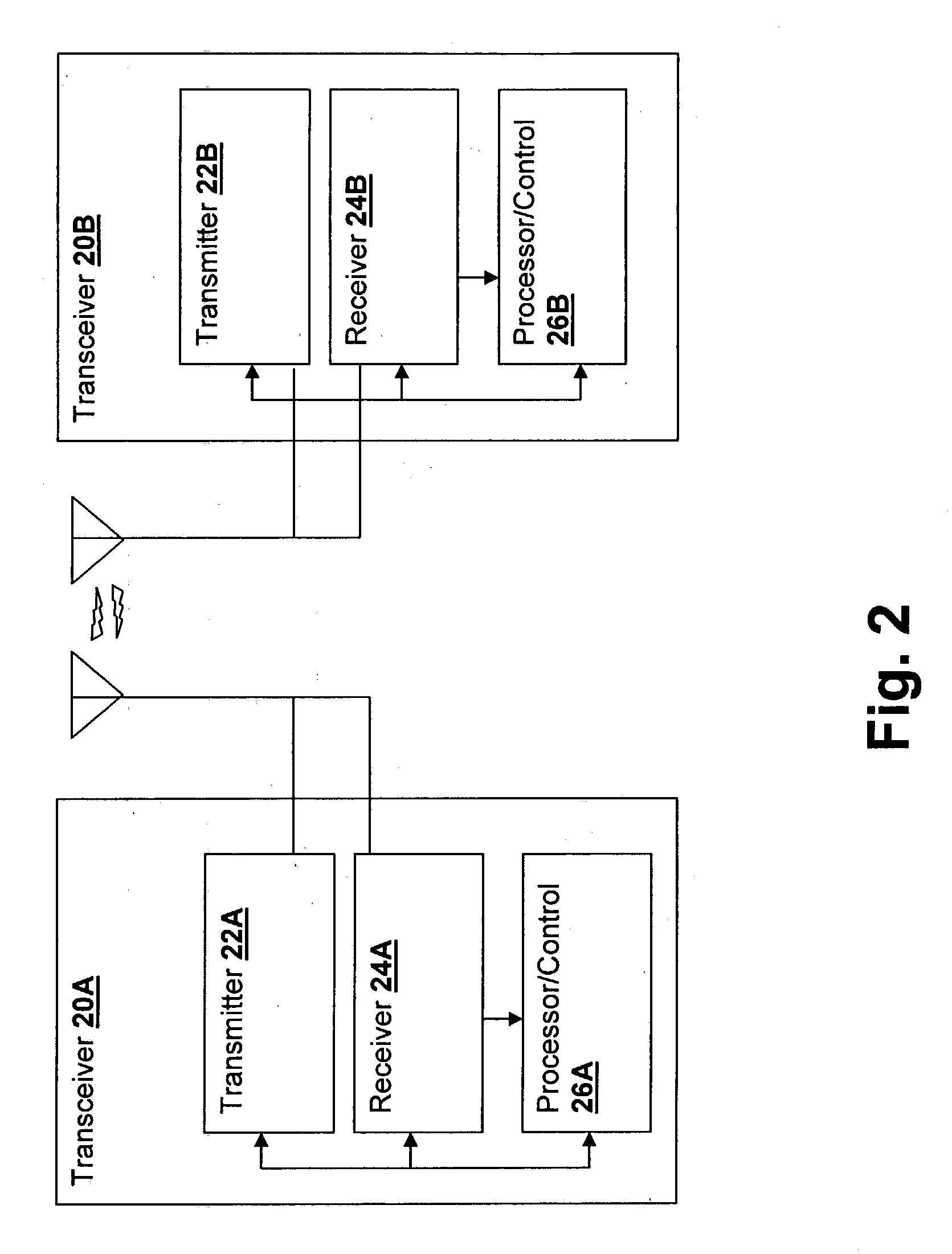Method and system for radio-frequency proximity detection using received signal strength variance
a technology of received signal strength and variance, applied in the field of radiofrequency distance measurement system, can solve the problems of reducing the overall reliability of the rssi-based proximity measurement, requiring additional circuitry and complexity in both transmitters and receivers, and poor performance of signal strength techniques (received signal strength indication--rssi)
- Summary
- Abstract
- Description
- Claims
- Application Information
AI Technical Summary
Problems solved by technology
Method used
Image
Examples
Embodiment Construction
[0016] The present invention provides a method and system for determining a proximity distance of a transmitting device by measuring the amplitude of a signal received at a receiver. The amplitude measurement is improved over prior amplitude measurements, with a consequent improvement in estimation accuracy of the distance between the transmitter and receiver. Referring now to FIG. 1, a graph depicting signal strength variance versus distance between transmitter and receiver is depicted. As is evident from the graph, variance of the signal strength increases with separation distance between the transmitter and receiver, and the present invention uses the variance information to provide improved proximity detection. Variance is a statistical quantifier given for finite number of samples n by the formula:
var=[n.multidot..SIGMA.s.sup.2-(.SIGMA.s.sup.2)] / [n.multidot.(n-1)]
[0017] where:
[0018] n is the number of samples
[0019] s is a recorded signal strength, expressed in linear (volts, wa...
PUM
 Login to View More
Login to View More Abstract
Description
Claims
Application Information
 Login to View More
Login to View More - R&D
- Intellectual Property
- Life Sciences
- Materials
- Tech Scout
- Unparalleled Data Quality
- Higher Quality Content
- 60% Fewer Hallucinations
Browse by: Latest US Patents, China's latest patents, Technical Efficacy Thesaurus, Application Domain, Technology Topic, Popular Technical Reports.
© 2025 PatSnap. All rights reserved.Legal|Privacy policy|Modern Slavery Act Transparency Statement|Sitemap|About US| Contact US: help@patsnap.com



